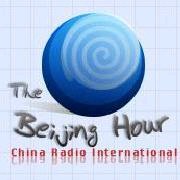
介绍:
IMF Says yuan on Path to Inclusion in SDR Basket
IMF managing director Christine Lagarde says her organization will do an assessment this year on whether to include the Chinese currency into its supplementary foreign exchange reserves (SDR).
Lagarde made the comments at the spring meetings of the International Monetary Fund and World Bank in Washington DC.
The assessment of a currency's eligibility to be added into the SDR is based on the export capacity of the country where the currency is being issued and the usability of the currency as an international currency.
Lagarde says the assessment will determine whether the Chinese currency meets the criteria.
"I believe that what the Chinese authorities have actually indicated in terms of liberalization of interest rates, in terms of opening up of the capital account, in terms of deepening of the financial markets, actually will naturally be conducive to an assessment of whether or not the renminbi is freely usable, which is, as you know, one of the key criteria. The other one is the export capacity and I think that on that one, nobody has any doubt as to whether or not China fits the bill,"
The SDR is an international reserve asset created by the IMF in 1969 to replenish the official reserves of its member states.
Currently the SDR basket consists of four currencies - the U.S. dollar, euro, pound sterling, and Japanese yen.
Last month, Chinese Premier Li Keqiang asked Lagarde to include the yuan in its SDR basket, pledging to speed up the renminbi's basic convertibility.
The IMF's board will hold an initial discussion on China's request next month.
It will also conduct a full five-yearly review of the SDR's composition later in the year before making a final decision in November.
If approved, the yuan would be the first emerging market currency to join the SDR.
World Bank, IMF Voice Willingness to Cooperate with AIIB
Anchor:
The heads of the World Bank and the International Monetary Fund (IMF) say they are willing to strengthen cooperation with the Asia Infrastructure Investment Bank (AIIB) to unleash the huge potential in the region.
CRI's Luo Bin has more.
Reporter:
Speaking ahead of the spring meetings of the International Monetary Fund and World Bank in Washington DC, IMF chief Christine Lagarde is lauding the AIIB as a good step toward helping a region which has significant needs.
"The proposal to have a completely dedicated institution [AIIB] that will focus on infrastructure on a regional basis is actually an attractive proposition and it is not that the region is short of needs, it is short of potential projects, That [AIIB] is a most welcomed institution and one with which the IMF certainly is planning to cooperate with."
World Bank President Jim Yong Kim is echoing Lagarde's suggestion.
"As I've said many times, we welcome the Asian Infrastructure Investment Bank. As I've just mentioned, infrastructure needs in the developing world are enormous and they are enormous in Asia, which for AIIB, is defined as sort of reaching from China all the way to the Middle East. And so our full expectation is that we will continue to work with them very closely."
At the same time, Jim Yong Kim says the World Bank would also like to team-up with the AIIB on certain projects.
"I suspect that in the early period we'll play a much larger role in project preparation because we have much more technical expertise than the AIIB has right now. But there's no reason why we would not do a lot of the project preparation, for example, through our Global Infrastructure Facility and then AIIB could be a co-investor. "
There are 57 founding members of the Asian Infrastructure Investment Bank.
The goal of the Chinese-initiated lending facility is to finance major infrastructure projects in Asia.
For CRI, I'm Luo Bin.
Real Estate Expo Opens in Beijing
The ongoing Beijing Real Estate Expo has attracted nearly five hundred domestic and foreign projects on display.
However, this time the number of exhibition projects from Beijing itself has decreased from last year's 30 to 12.
Zheng Xiangdong, secretary general of the organizing committee of the expo, explains the drop in local projects.
"The housing market was weak last year and many real estate developers met difficulties in marketing, so they are waiting for the market to rebound or the easing of relevant policy. Some of them still hold a wait-and-see mood in this year's developing trend and strategy."
Meanwhile, the number of projects from abroad at the expo has increased from last year's 320 to 340.
Director of international business of the organizing committee holds that the huge purchasing power of Chinese customers has attracted more foreign exhibitors to exploit market.
The expo has always been regarded as the weather vane of the Chinese real estate market.
This year's event will run until Sunday.
China's First Big Data Exchange Opens in Guiyang
China's first big data exchange has been established in Guiyang City, Guizhou Province.
Thirteen kinds of data, including financial, medical, education, and traffic data can be traded in the exchange.
The prices for data are fixed according to data content, time span, and the value created as well as data varieties.
The whole process for buying and selling on the exchange will be supervised by special committees.
Wang Sanshou, president of Guiyang Big Data Exchange, explains how trading will work.
"One data buyer may work with several scores or even hundreds of suppliers, and one data seller can also trade with hundreds or even thousands of buyers. The value produced by data of one company can be seen as a point, so we always believe that the encounters of different data will produce the effect of nuclear fusion."
More than 130 enterprises have joined the exchange.
It is expected that about one thousand data suppliers will trade data in the platform at the end of this year.
Samsung Galaxy S6, S6 Edge on Sale in China
Samsung's next-generation handset, the Galaxy S6, has gone on sale on the Chinese mainland.
The base unit has a price of 5088 yuan while the top end phone costs 6688 yuan. That puts the price range between 800 and 1100 US dollars.
The smartphones will be available in four colours: White Pearl, Black, Blue, and Green.
The new Blue and Green S6 Egde models are only available through pre-order for the time being.
The new S6 is the world's first smartphone to feature a screen that curves on its left and right sides.
大家还在听

